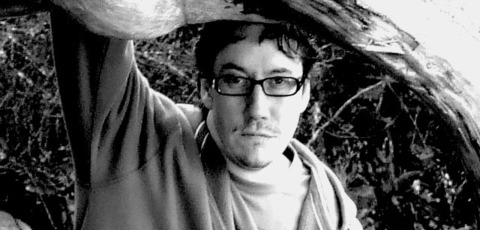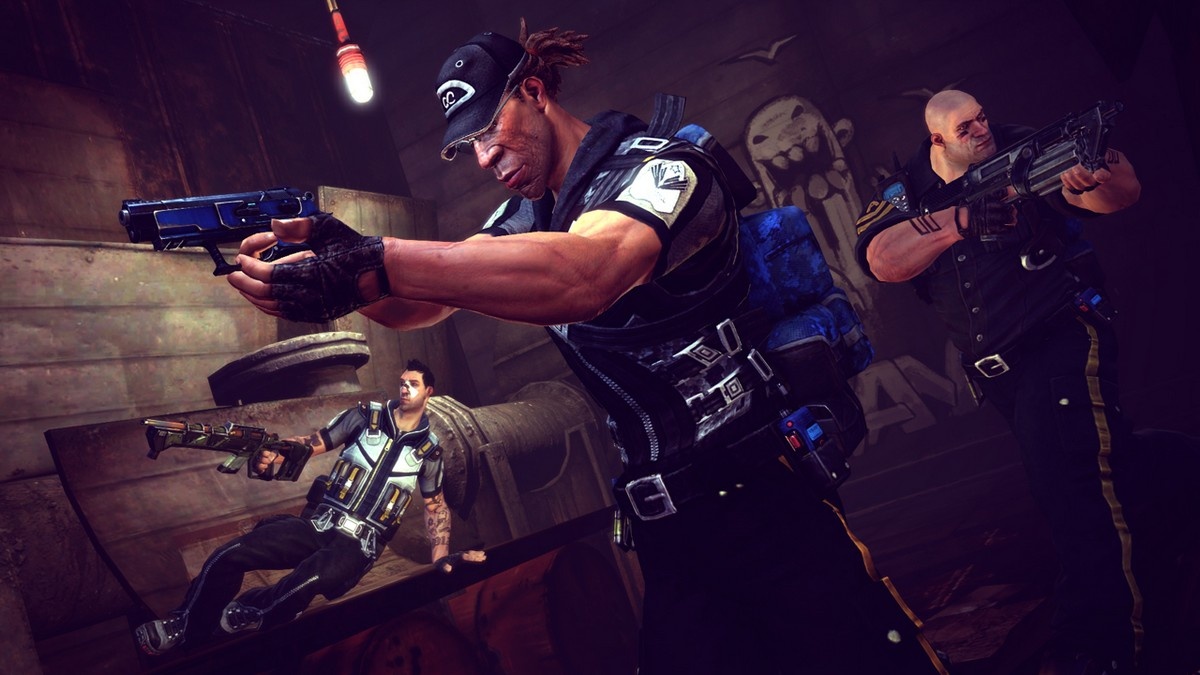Sound Byte: Meet the Audio Director of Brink
Chris Sweetman shares his experience working on the audio in the upcoming sci-fi action game, Brink.
 Splash Damage's upcoming futuristic shooter looks to stands apart from other shooters by focusing on parkour-style movement along with gunplay. The gunplay is what falls into audio director Chris Sweetman's territory, a role where all things related to audio must come together and not sound like a garbled mess. In this e-mail Q&A, Chris shares how he got into sound design and the work that went into making all of Brink's weapons sound unique. For previous Sound Byte articles that cover video game music and sound design, click here.
Splash Damage's upcoming futuristic shooter looks to stands apart from other shooters by focusing on parkour-style movement along with gunplay. The gunplay is what falls into audio director Chris Sweetman's territory, a role where all things related to audio must come together and not sound like a garbled mess. In this e-mail Q&A, Chris shares how he got into sound design and the work that went into making all of Brink's weapons sound unique. For previous Sound Byte articles that cover video game music and sound design, click here.
GameSpot: Could you start off by telling us a bit about yourself and your background?
Chris Sweetman: Hi there! I'm Chris Sweetman, audio director at Splash Damage, and I've been here for just over three years. I started my career in the film and television industry back in the hallowed mists of time before landing a job at Gremlin Graphics in Sheffield, working on games like Hogs of War and Actua Soccer. I also worked at Criterion on the BLACK and Burnout franchises right before joining Splash Damage.
GS: How did you start working in sound design?
CS: I started working as a runner in the film industry at a postproduction company run by my Dad (good old nepotism!). I got to learn a lot about sound manipulation from the guys there and gradually worked my way up to running the sound effects library and recording voice-over and Foley.
My sound design started with good-old 1/4" tape and 35mm film, so working with modern digital audio workstations like Pro Tools is a real breeze!
GS: As an audio director, what are your job responsibilities in regards to working on Brink?
CS: My job at its core is defining the creative direction for all aspects of audio for a title. This encapsulates sound design, dialogue, and music. Each of these then breaks down into multiple areas like weapon sounds, in-game music, in-game voice, cutscenes, and so on.
I also tend to do a large chunk of the sound design wherever possible, and in the case of Brink, I actually did all of it. There are further considerations, like the casting of actors, editing of dialogue, mixing, and implementing all these sounds into the game, so it's quite a varied role.
GS: How do you approach the sound and music in the game? Are they closely tied together?
CS: They are very closely tied. When starting a project, we create audio direction documents along with what we call pre-sonics, detailing exactly what everything sounds like and why it sounds that way.
Everything in Brink is tied to the basic premise that we have two distinct and different factions. We also tried to distinguish between the two factions sonically. For example, each faction has its own distinct musical themes and style. The Security has a hybrid of electronic and orchestral style, whilst the Resistance has a more orchestral and percussive style. The same applies to the weapon sound design, too, with each faction having slightly different-sounding weapons. The Resistance has a less-oiled, rougher sound to their weapons, and the Security guns have more of a slick, well-maintained sound to them.
GS: Sound is obviously one of more important features of a shooter because there is always a lot going on. In your developer diary, you touched on sonic space and the problem with having too many sounds at the same time. Did you achieve what you set out to do now that Brink is done? What was your approach?
CS: I think we achieved what we set out to do, which was to make sure that there was enough sonic space in the mix to hear all the really important sounds, like Foley and weapons. Our approach was to create a variation on the HDR automatic mixing system, which gave us a real sense of space due to the way it handles the mixing. We have various parameters in place to cull sounds that are not important to the player at a given time and other tricks, which simply cut down on audio clutter. I'm a perfectionist, so I'm always dragged kicking and screaming away from the title shouting "Just one more change! Please!"
GS: What do you do to achieve the sounds that you want for various parts in the game?
CS: For our weapons, we did an audio recording session in the desert just outside of Las Vegas, where we recorded over 40 different weapons at various distances. We then used this material as the basis for designing the weapons in Brink. We wanted distinct sounds, not just loud sounds (as weapons can sound very similar), so for the recording session, we mainly chose weapons that had unique sounds to them.
The Foley was another major focus for us. With the SMART (Smooth Movement Across Random Terrain) movement system, it was incredibly important to make sure each body type had its own distinct footsteps, climbing, and mantling sounds to give each of them an appropriate feeling sonically. To accomplish this, we spent two days with Glen Gathard at Shepperton Studios in England recording Foley for every audible aspect of the characters and weapons in the game.
Truthfully, the most challenging part is then trying to get all these sounds into the game!
GS: What are some of the strangest things you've done to get a particular sound?
CS: Hmmm, the most unusual thing on Brink was using my own voice in some of the pistol sounds. I also used the sound of women screaming in some of the weapon sounds, including the Barnett light rifle.
I've done some weirder stuff, too, but honestly can't really go into further detail as it's just too strange!
GS: How do you think the audio is being treated in games today? Where do you see it heading?
CS: I think audio is being treated increasingly well in the industry, and people are finally realizing what we have been trying to tell them all along: Audio is at least 50 percent of the gaming experience. There are some fantastic-sounding titles out there now, like Battlefield Bad Company, Medal of Honor, Alan Wake, Left 4 Dead, Portal 2, Limbo, Need for Speed, Trine, Assassins Creed, and many more. We still have a ways to go before audio is treated with the respect it deserves, but it's well on its way!
I also can see there being more experimentation with audio in smaller Xbox Live Arcade and PlayStation Network titles, which I think is fantastic. It's a real test bed for new ideas in audio, as well as gameplay.
GS: Do you have any advice for aspiring sound designers?
CS: Experimentation, experimentation, experimentation, and then do some more…you guessed it: experimentation.
Don't be afraid to play around with mixing and blending sounds that normally would not be put together. I always strive for texture in my sounds, and I get that by using nonliteral and literal sounds. I also personally prefer to get unique sounds by blending and not by using plug-ins, as the latter can sometimes give your sounds an artificial quality. For example, the basic shotgun sound in Brink has over 18 subtle layers of texture to it.
Lastly, if you can, record your own source material where possible--it will always give you an edge.
GS: Good advice, thanks for your time!
Sound Byte is GameSpot's game music blog, which covers every aspect of music in games, including interviews with top game music composers and discussions of new or classic game soundtracks. Have a question or suggestion? Leave us a comment below or e-mail us at soundbyte@gamespot.com. For a list of previous Sound Byte features, click here. Follow us on Twitter! @gs_soundbyte
Got a news tip or want to contact us directly? Email news@gamespot.com


Join the conversation